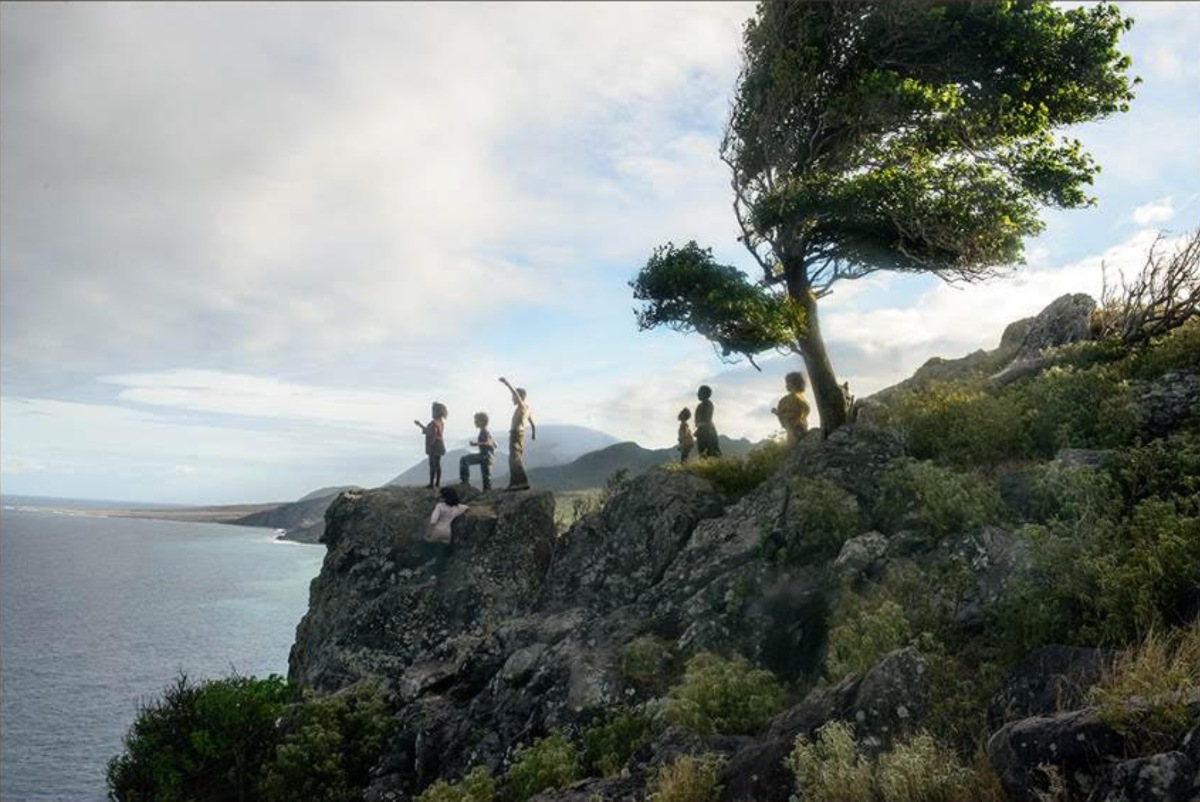“Peter means something different to every person. We all have an idea of what that story means and who he is. And it has so much to do with how we think of what freedom is. Peter is a symbol of freedom,” director Benh Zeitlin said about adapting the classic J.M. Barrie tale, Peter Pan, in an interview with the Voice. In the first scene of Zeitlin’s new film Wendy (2020), he enchantingly portrays every child’s dream of running away to someplace magical and free. These children, however, begin their journey in a setting far removed from turn-of-the-century London.
The camera pans around a noisy diner. The viewer meets a baby girl, Wendy (Tommie Lynn Milazzo), who’s chubby legs are shown trotting up and down the countertop, and a boy, Thomas (Krzysztof Meyn), who—after being told he’s going to one day live a boring, adult life—races outside onto the nearby train tracks. Wendy watches with wide eyes as Thomas encounters a laughing figure jumping over the tops of the boxcars. Fast forward, we see Wendy (Devin France) bussing tables despite her still relatively young age, and we see that Thomas is considered missing. But the audience can guess that Thomas followed that jumping figure to another world, one we all know: Neverland. This vignette not only sets up this “other reality” that only children understand, but it also creates in the movie a sense of wonder that singles out Wendy. It’s no coincidence then that Wendy is the one to wake up to the sounds of Peter’s (Yashua Mack) laughter when he’s again running atop the trains outside their window later in the movie.
In this retelling of Barrie’s classic novel, Zeitlin transforms the story of Wendy and her brothers’ adventure to Neverland into a naturalistic, wild, and dreamlike escape from a small Louisiana town. Almost all the elements of the original tale can be found in some shape or form, but the little shifts that Zeitlin, previously nominated for Best Director at the 2013 Oscars for Beasts of the Southern Wild (2012), adds to the story make it feel like its own world. When the Darlings arrive in Neverland, they’re introduced to Peter’s crew of lost children and discover a disheveled-looking Thomas who barely recognizes his own name. When they realize that he has not aged a day since his disappearance, they begin to explore all the magic that the island has to offer, including a volcano that can thrillingly erupt on command. Aside from plot details, Wendy’s cinematography is a breathtaking deviation from other adaptations of the iconic story. It’s obvious in every frame that both Benh and his creative partner and sister, Eliza Zeitlin, spent a painstaking amount of time perfecting the tone and look of the film. “Until we both agreed on something, we always knew it could be better,” he said. Although its style is not that different from his previous movie, his camera work beautifully evokes realism in such a way that, when contrasted with the magical elements, creates a sense in the viewer that they’re being let in on a fantastical secret. Additionally, Zeitlin’s delightful use of practical effects to create the ethereal, fish-like Mother character—who takes care of Peter and the lost children—is another triumph in the film’s approach towards realism.
Probably the most striking feature of this throughline, however, is the cast of the film. Like in Beasts, Zeitlin hired completely inexperienced actors, most of them children, to be a part of the movie. Although it worked previously, it’s not entirely clear whether this choice was for the best in Wendy. The kids handle some of the scenes well, but others are clunky just by virtue of the kids’ lack of long-term coaching. Intermittent stretches of silence and slightly corny dialogue also don’t aid in enhancing their performances. In combination with a script occasionally lacking in excitement, the performances at their worst are not strong enough to carry the plot. But as Zeitlin said, “The film is really about the freedom and the joy of children.” Because Zeitlin wanted to emphasize the individual personalities of the child actors, rather than push them to behave as someone entirely different, their own raucous energy explodes onto the screen, ultimately creating that truly infectious sense of freedom and joy Zeitlin was aiming for.
The qualities to appreciate about Wendy are numerous: its unique and beautiful camera work, the blend of sharp realism with fantastical elements, the playful and soaring score. Most importantly, however, Wendy beautifully handles the themes of growing up and motherhood. Zeitlin specifically wants to examine connections between childhood wonder and adulthood joy: “It’s an acceptable idea that you were the happiest you ever were as a kid,” he said. “That doesn’t fly for me.” Zeitlin meaningfully depicts this juxtaposition in one of the final scenes of the film. Although Wendy ends like the original Peter Pan, with Wendy deciding that she and her brothers belong back home, Zeitlin’s version of the story includes a unique twist on the Captain Hook character that lends itself to this theme. Although Hook cannot obtain the idyllic delight of childhood, Wendy, in realizing that her next greatest adventure is to grow up, teaches Hook how to play by prompting him to “fight” with Peter. With the shot of Hook—an old man—and young Peter enthusiastically clashing swords atop a treacherous rock, and Wendy later continuing to play and laugh as an adult, Zeitlin aims to prove wrong the accepted adage that you cannot carry your youthful happiness past adolescence.
Regarding the theme of motherhood, the film presents a refreshingly nuanced approach. Zeitlin specifically wanted to highlight this aspect of the narrative: “It comes from us having loved the idea of Peter Pan so much and being endlessly disappointed by what’s inside of that story…in particular the way it treats women, treats Wendy.” In the original Peter Pan, Wendy’s motherly qualities lead to her partial exclusion from the group of lost boys, which is never fully remedied by the end of the story. In Wendy, Zeitlin takes care to emphasize the importance of mothers, from the powerful sea-dwelling Mother character to the reverence that Peter shows for Wendy as his possible mother figure. While Wendy occasionally takes on a mothering role, this does not result in any negative female othering. The entire question of the significance of Wendy’s femininity in this film is beautifully irrelevant, except for when Peter equates her with the most awe-inspiring force in his life. Zeitlin wants to show Wendy’s strength through the power of motherhood instead of simply putting a sword in her hand.
The similarities between Wendy and Zeitlin’s debut film Beasts may lead audiences to compare the two movies, judging Wendy more harshly. Moreover, the lack of excitement in the plot and script may leave some audience members wanting more. Despite these aspects, however, Wendy is a beautifully shot film, made by a director who truly cared about each aspect of the movie’s tone and theme. Wendy might not go down in history as the best adaptation of J.M. Barrie’s classic, but to skip out on this wonder-driven, love letter to childhood would be a mistake.




